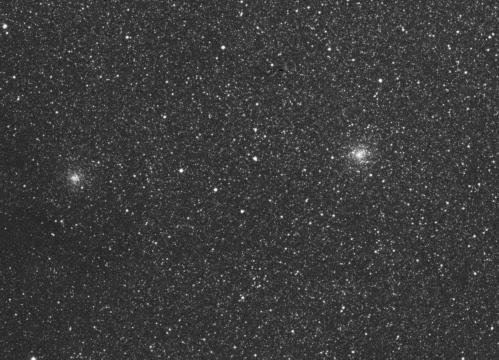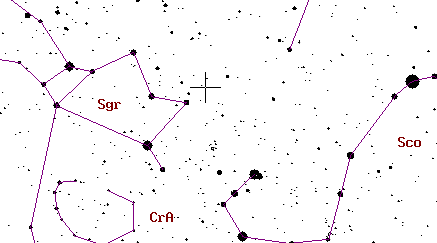Baade's Window
Jack Kramer

You wouldn't think you're looking out a window, but you are! Near the spout of the Sagittarius Teapot is an area densely populated with stars at the very heart of the Milky Way. Normally dust in the plane of our galaxy would obscure our view of what lies beyond. But the astronomer Walter Baade determined that this area is remarkably free of the patches of dust that are so common elsewhere in the plane of the Milky Way. The dust patches are known as "dark nebulae" and have been assigned "B" (Barnard) designations. However, in this spot we can see into the very hub of our galaxy and beyond. Hence, this "window" has been named for Baade. The diagram below (from the Guide computer program) is centered roughly on an area where the window is especially transparent (denotes by the + sign.).
�

One of the objects we can see here is the Large Sagittarius Star Cloud, which is located in the hub of the Milky Way. The image of the region shown at the top of this article is from the Palomar Digital Sky Survey and is approximately 30' across. The contour of the Star Cloud is somewhat visible, with fewer stars at lower left and a higher concentration to the upper right.
The two globular clusters in the field, NGC 6522 and the smaller NGC 6528, are quite distant -- they lie on the far side of the galactic hub. My records show that in the 10-inch scope both of these clusters were fairly easy to spot, but neither one was resolved. Reports from other observers indicate that they were still unresolved visually in instruments as large as 20-inches.
This whole area of the sky is something you really ought to view in detail. At the risk of getting up on a soapbox, I urge that you make a special effort this year to go out to a dark sky site in order to appreciate the depth and breadth of our galaxy. No amateur astronomer can claim to have experienced the scope of the Milky Way unless he or she has taken it all in under a truly dark sky. It's a rite of passage!
Published in the June 1998 issue of the NightTimes




